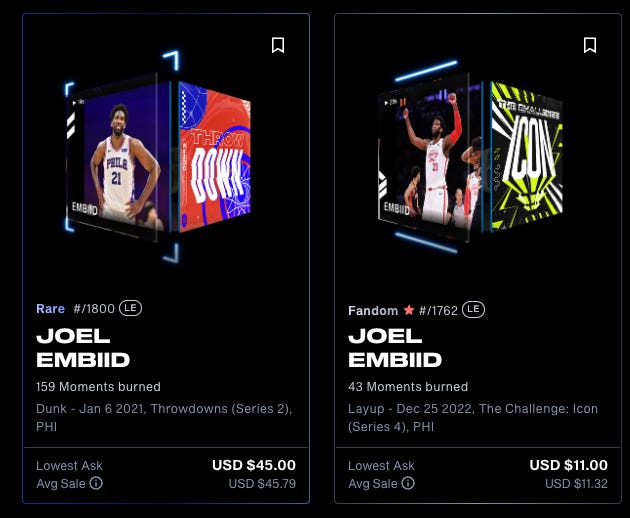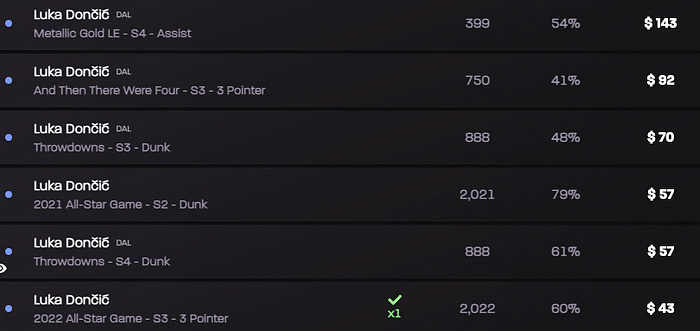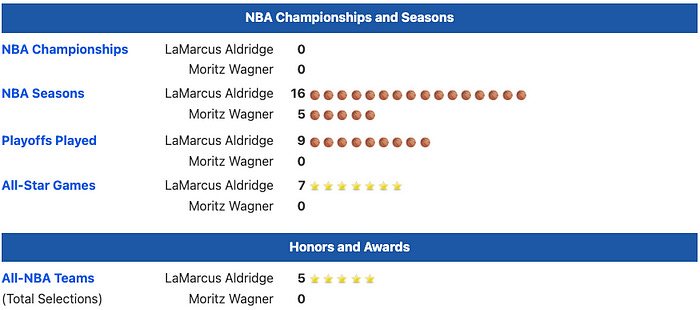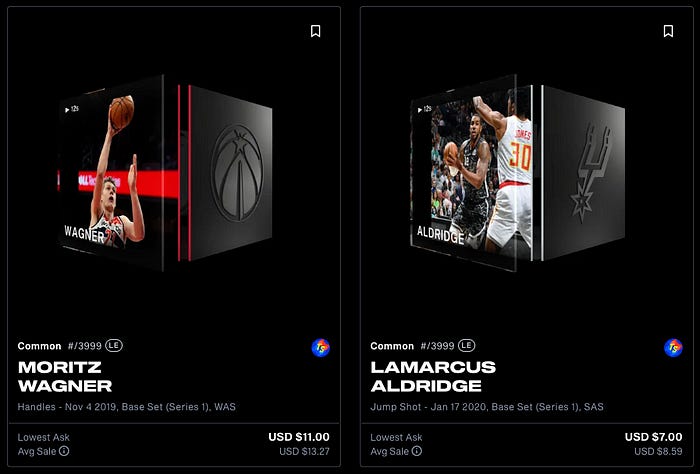NBA Top Shot in the News: Is a Moment a Collectible?
Written by Danvers Fleury aka SocioTechnica
Disclaimer: Nothing in this article constitutes financial advice and is purely for informational purposes only.
Top Shot has been getting a lot of headlines recently due to a lawsuit arguing that moments are securities, like stocks. This has led to some eyebrow raising statements:
“Top Shot going forward is decidedly a collectible first, and what that means is you’ll see us double down on ways for collectors on our platform to feel the joy and delight of collecting. Better personalization, more customization in how you collect. Things like improving the Marketplace with the hover over to watch highlights…”
-Roham Gharegozlou, CEO of Dapper Labs in AMA on Friday March 3rd, 2023
I came into Top Shot describing moments as digital, rather than paper, sports collectibles. Unfortunately, Top Shot moments do not “behave” at all like most collectibles:
The Dapper Labs’ reward system is the #1 driver of value. This warps prices.
The current reward system values real-time fantasy production; the best moments to own are the least scarce/expensive that can meet fantasy production needs.
This turns rare tier moments and moments of aging stars into timebombs.
Fixing Top Shot to truly be a collectibles first gamified experience would mean aligning the reward system to augment, rather than combat, traditional collector behavior.
How Top Shot Lost Many Early Users: Gamification Gone Wrong
Moments are sold as collectibles and in fairness Moments share traits with cardboard cards:
A moment features a player, anywhere from an MVP to a bench warmer.
The moment is time stamped, badged and video clipped to denote the point in the player’s career it represents.
Moments are serial numbered to denote scarcity. Just like in cardboard, some collectors will pay extra for low serials, lucky numbers, birthdate and birth year numbers, etc.
But Top Shot is also an ecosystem of related gamified mechanics, rules, and rewards. As a brief reminder, less we lose track, these include but are not limited to: Set Collecting Challenges, Pack Drops, Collector Score, Flash Challenges, Team & Player Leaderboards, Captain’s Clubs (team based communities), & Trade Ticket Events.
These overlapping mechanisms create asymmetrical value for participants which is a good thing for marketplace based games. I may care a great deal about completing sets and you may care a great deal about playing flash challenges, and thus win-win trades can be found.
But when poorly planned, their interplay can get downright ugly.
For example:
In the early days, many fake accounts were made to try to ‘win’ slots in the pack drops, which at the time were guaranteed to be profitable.
Collector score was invented to gate access.
Dapper’s first collector score equation involved bonuses where owning team sets then gave extra value to duplicates of moments. This drove people to hoard crap bulk moments of the Minnesota Timberwolves.
Horrified that Josh Okogie was selling for more than Jayson Tatum, Dapper revamped the whole system, cratering the value of low end moments.
Then pack drops went from predictably profitable, to predictably unprofitable.
Now users that fought to move up the charts, perhaps refactoring their collections twice, had simply earned the right to lose money at scale.
Accordingly, for most people, aggregate collector score is no longer pursue
By changing the rules twice and then changing the reward level for the gamified element played (Pack Drop), Dapper effectively reversed the entire flow that made the project an initial success: announce a pack drop and tens of thousands of people line up for free money. As you could imagine, this decimated market confidence and bled a lot of users. To re-spark interest they launched an entirely new concept that now dominates moment valuation: the aforementioned flash challenge.
A Simple Example of a Reward Norm Erasing Collectibility
Right now someone who has never used the platform could walk in and accurately guess that the reward system values the ‘Rare’ designation over the ‘Fandom designation:
Above, you can see two nearly identical moments with nearly identical scarcity and desirability. Neither plays a big role in set completion or leaderboards. Neither is of a particularly historic or interesting moment in basketball history. The one significant difference is the price tag: the one from the rare tier costs over 4x as much.
There is no official rule that the rare tier is always better than the fandom tier for challenges, it’s simply an established norm that the market operates with.
If Dapper decided that for next year that scarcity designation didn’t matter and mint counts were the driver, those weird prices would “correct” and the moments would be worth the same. Fandom collectors would get richer and rare collectors would get poorer.
We know this both from history, and from how the market behaves during live flash challenges.
The Anti-Basketball Cards — Moments in a Flash Challenge
Let’s assume that Luka Doncic has a huge game, and it turns out that he is involved in a flash challenge where you need to perform a certain task with any rare moment of his. The specifics of the requested task will determine how the market moves.
Burning Challenge: If the challenge requires *burning* only the cheapest moments will see short-term appreciation in the marketplace. No one will burn his $140+ rare, but his 2022 All Star game rare, the cheapest on the market, will get burned many times over.
Submit Challenge: If the challenge requires you to submit proof of ownership of any rare, chances are his $43 all star game moment will get bought up into the mid $50s before people start choosing rarer moments in more desirable sets, like his S4 Throwdowns moment, because when they sell them after the challenge, they won’t depreciate as much.
Locking Challenge: If the challenge requires *locking*, or committing to not sell your moment for at least 365 days, behaviors become split across three camps:
-Some still lock the cheapest possible moment to conserve capital.
-Some lock the cheapest team moment to at least get some leaderboard value.
-Some lock a premium moment to pursue additional goals like set completion or good old fashioned collecting behavior of having one copy of every rare of a player.
In cardboard, the scarcest cards are the most desirable. But here, owning the least scarce / most affordable collectible is usually the way to go. And unfortunately, Top Shot has built a system that continues to generate additional, often cheaper, alternatives.
The Luka Doncic Rare Moment Death Spiral
Once we see that the most efficient way to generate returns in a collection via challenges is to own the least attractive moment for our short-term needs, we run into a buzz saw — every year more moments get put out for players.
This is particularly true for the league’s most popular superstars who see all star and playoff rares minted in addition to their regular season rares.
Let’s take Luka Doncic’s rare moment count by Top Shot Series:
S1: 2
S2: +2
S3: +4 (!)
S4: +3 and counting
In season 2 challenges, you had 4 ways to fulfill a Luka rare requirement. In season 4 challenges, you now have 11. By season 6, we will conceivably be past 20. When Top Shot was just a collecting game with a growing userbase, this all made sense. As a fantasy game with a shrinking userbase, it’s value destruction by design.
Unless you leveraged a Doncic rare bought in season 2 for *many* challenges, chances are you just saw it crash in value because more and more affordable alternatives were produced, and if you tried to sell, you would likely find yourself needing to drop your price to be closer to the cheap alternatives that just as capably fulfill the requirements to earn rewards.
It doesn’t generally work this way with cardboard. If I have an extremely rare version of a card, perhaps with special foil or a certified autograph, and a general kind-of-rare version of it comes out that isn’t special, the extremely rare one won’t lose much value. They’re treated as two completely different assets.
But in Top Shot, if a less rare moment comes out with the same utility as the prior rare moment, demand drivers will spike the cheaper asset until it costs close to the more expensive one making hunting scarcity over utility a questionable pursuit.
But here’s the real kicker — not only will there be 100 Luka Doncic rares on Top Shot one day, one day they’ll all be floating around *and* he won’t be playing anymore.
They Won’t Play Forever: The Player Depreciation Cliff
I’d like to re-introduce you to potential hall of famer Lamarcus Aldridge and NBA journeyman Mo Wagner.
Lamarcus Aldridge was a true star for much of his career. Moritz Wagner will be remembered by very few once he retires. But you’d never guess that by visiting Top Shot!
The moments have identical mints, and neither moment holds much special value for team checklists. And Wagner’s is 50%+ more expensive. I would posit the following: the Top Shot market anticipates Wagner generating more fantasy value than the retired Aldridge, whose moment shares the current spotlight as cheapest series 1 Top Shot debut with players who have not had good careers and are either out of the NBA or don’t get any playing time. At least presently, his career success is adding $0 to the value of his moment.
Thus, when considering investing in a moment, one should probably take into account the short-term and long-term fantasy value of the moment. This means asking questions like:
Where is this player relative to their peak performance (avg. age 27) and retirement?
Is this player on a playoff bound team this year and in the future, extending their fantasy runs?
How many games per year does this player miss on average due to injury? (often goes hand in hand with athlete age.)
Which then leads to an interesting question — what’s up with some of the oldest players in the NBA having the most valuable moments?
Lebron James Rare Moments — Albatross or Harbinger?
Lebron James is arguably the greatest basketball player of all time. However, he is 38, frequently injured and on a go nowhere team.
Top Shot has around 10k active monthly users. There are over 10,000 Lebron rare moments. There are almost enough LBJ rares for every active Top Shot user, like the party hat and noise maker by your plate at a new year’s party.
But the cheapest ticket to this party, as of this writing, is $180 for an all star game rare. That’s over 4x the $32 you’d spend for a Devin Booker rare from the same set. Devin Booker, a top 10 in Jersey sales, pre-prime star on a championship contender with 50%+ fewer rares available on the market to purchase.
Worse still -as the GOAT and surefire winner for sales, dapper is likely not done producing LBJ rares. If gamification continues to eat collectibility then the most overvalued asset class on Top Shot is easily bulk Lebron James rare moments. What drives value when he retires?
An alternate take: this represents evidence of collectibles behaving like collectibles where the most popular player has the most desirable stuff. You decide!
The Wrap Up — What Will Top Shot Do, or Be, Next?
Top Shot needs to be remodeled as a collectibles first gaming experience. Leaning further into daily fantasy simply makes them a worse Sorare. And it’s hard to get collectors to collect collectibles that operate in the opposite manner of every other collectible there is.
A strong proposal for fixing this can be found in this stellar article by Top Shot Decisions.
Here is my first, cursory take, to be further fleshed out later:
Stabilize Reward Expectations
Announce a clear reward system (more on how it should work later) and hold it for an entire season of play.
Put trading restrictions (EX: one trade every 4 hours for 48 hours) on the market before and after the announcement to temper flash booms and crashes.
Now users understand that the game they’re playing does change over time, but it changes more predictably.
Rebuild the Core, Proven, Collectible Game
Make pack drops guaranteed +EV again. It’s the easiest game to play, and win, for novice collectors. Also supply *must* be right sized for this to work.
Locked specialty set ownership improves your odds of accessing specialty drops.
Now doing set challenges to get bottlenecks makes sense again. Continuing to have these gamified experiences involving locking adds to help right size supply.
Collector score improves your odds of accessing the most frequent, general drops.
This does create a problem: new users don’t have locked sets or high collector scores and we need new users.
Tier Every Reward System
NFL All Day has done an excellent job of having three levels of participation for their challenges, allowing whales to have an entirely different experience from newbies. This can be applied to every level of gamification at Top Shot.
For example, team leaderboard rewards could become *known* to be legendary for the top 100, rare for 101–600 and common for 601–5,000, with a unique moment for each level.
Lean into the multi-tier pack drop. Have new collectors more likely to get a $10 pack worth $15, and large collectors more likely to get a $50 worth $75.
Incentivize Collecting
I’ve pointed out a few ways that dapper has put their thumb on the scale and made people do things that don’t look like collecting. They could just as easily do the same to incentivize behaviors that already exist in non-gamified collectible communities.
Give team leaderboard bonuses to owning moments from highly decorated players.
Give player leaderboard bonuses for the diversity of moments you own. (ex one of every rare)
When a player retires, allow users to stake them for dapper or flow coins, with the reward being commensurate to how decorated the player is (All NBA, Hall of Fame, etc.)
Embrace Traditional Fantasy over Daily Fantasy
Daily fantasy is designed for people who are not committed enough to build a squad and manage it for the entire season. What a strange choice to use that gaming model for a platform designed with the intent of us building long-term collections. Imagine if the gamification system became seasonal, matching the reward rules. So many great possibilities!
About the Author: Danvers Fleury is an independent product market fit consultant who holds a BS from Boston College’s Carroll School of Management & MBA from UNC Chapel Hill’s Kenan-Flagler. He was also a research fellow at Duke University’s Behavioral Economics Lab, The Center for Advanced Hindsight. His NBA Top Shot handle is Socio.







